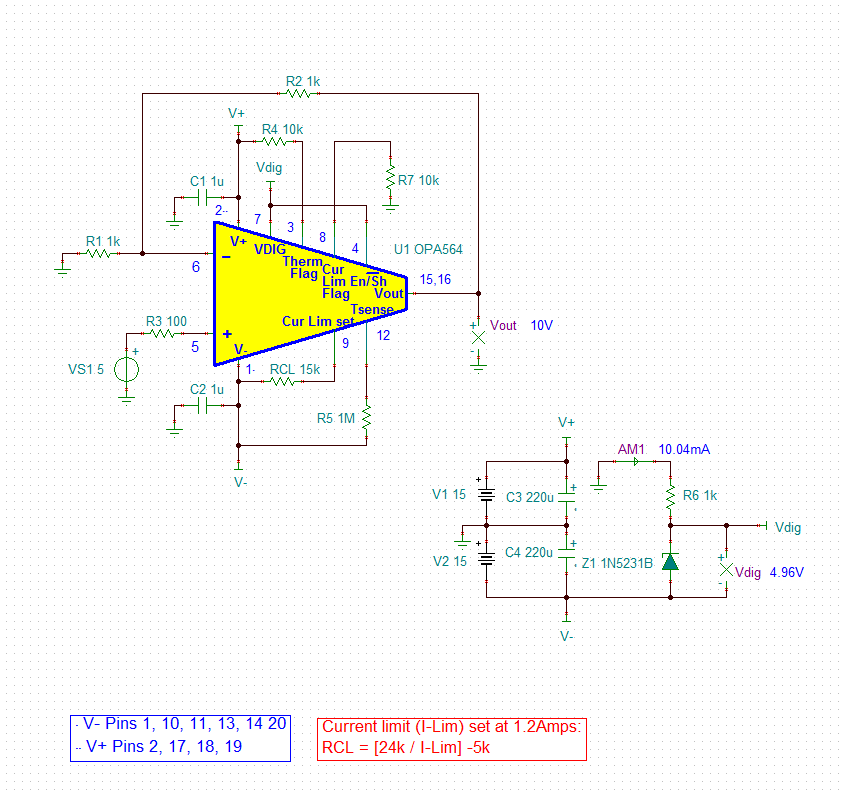Hi,
I currently use opa564 with no issue, I use +/- 12VDC for the Vs and -vs.
For Vdig I use resistor divider of 1K and 500 Ohms connecteed to -12Vdc, which will create around -8Vdc on the Vdig.
I didn't take care of power on sequencing so far. But I would like to implement one.
What is th ebest way to do it ? Will a bigger cap on the analog power supply wil be suficient ?
Ad for the v e/S (enable/shut down) , what is the range for shutdown logic if I use +/- 12Vdc . If I look at the datasheet , range is -12V to (-11.2).
How do you implement this practically ?
Thank you


